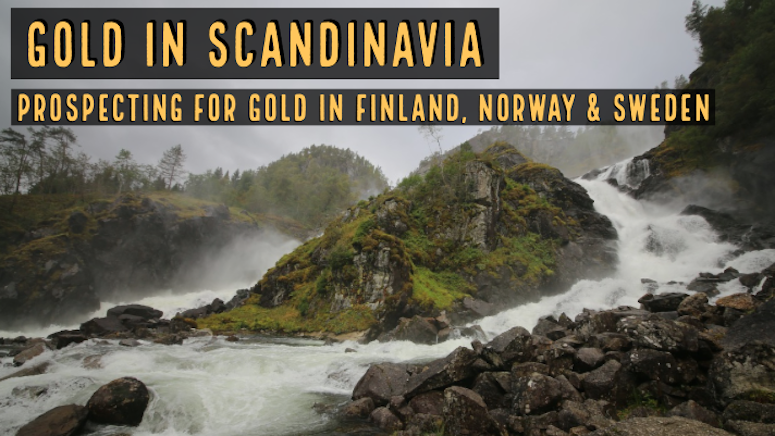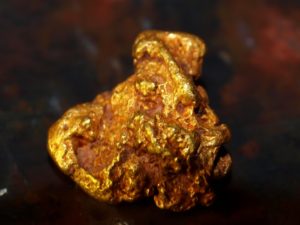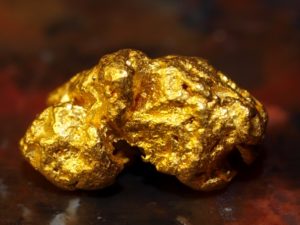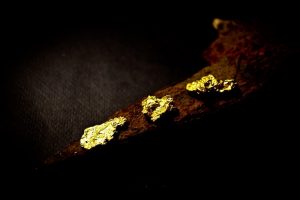
Scandinavia is a region known for their cold climate, plentiful marine resources and some of the highest literacy and education success rates in the world. What most people overlook, however, are the mineral resources these countries have to offer.
In this article, we take a closer look at Norway, Sweden and Finland. All 3 of these countries have gold, and of course some areas are much better than others. Long winters mean that most prospectors head out when the weather warms and the creeks and rivers open up.
Gold Mines of Norway
 In Norway, gold can be mined in several places, one of which is Eidsvold (also spelled Eidsvoll). Eidsvold is a municipality in Akerhus County, located towards the southeastern region of Norway. This was the site of the first gold mine operation in the entire country back in 1758.
In Norway, gold can be mined in several places, one of which is Eidsvold (also spelled Eidsvoll). Eidsvold is a municipality in Akerhus County, located towards the southeastern region of Norway. This was the site of the first gold mine operation in the entire country back in 1758.
It was called Gamle-gruben, or “the old mine”, and began as a result of visible gold discoveries in a nearby copper mine by Ole Viborg. Gold in this area occurs with pyrite in quartz veins of late Proterozoic age.
Gold discoveries were subsequently made in Bomlo, Telemark and Bindal. For many years, gold from Norway was mostly a by-product of mining other metals like copper, lead and zinc.
What increased the country’s gold production was the Biddjovagge Gold and Copper Mine, which began operations in 1970 and was originally mining copper only. Bidjovagge is located in Finnmark, in northernmost Norway and home to the Kautokeino Greenstone Belt. Beginning 1985, large amounts of gold began to be extracted from the mine, prompting the name change to “Gold and Copper”. It continued to produce consistently for almost a decade, but the mine ultimately had to close down when the price of copper dropped.
Biddjovagge had fairly consistent production until 1991 and totaled approximately 6,200kg of gold. This mine spans 2.5km long and is currently owned by the Swedish firm Arctic Gold AB.
Other gold mines in Norway are in Bomlo, another area known for gold discoveries. The gold mines in Lykling, along the western shore of the island were very active between 1882 to 1910. Some mining activity still occurs here although permission of the landowner is required to prospect in this area.
Gold Mines of Sweden
 Heading eastward, we move onto Sweden. The largest country in Northern Europe and one of the most minerally rich, Sweden boasts of a 6,000-year old mining history.
Heading eastward, we move onto Sweden. The largest country in Northern Europe and one of the most minerally rich, Sweden boasts of a 6,000-year old mining history.
One could say that the very buildings of Sweden are steeped in mining history, simply because the pigment known as falun red which coats their castles and churches came from the copper Falun mine in Dalarna. This mine dates back to 1300 and accounted for two-thirds of the entire continent’s copper demand.
Today, Sweden remains a strong mineral producer and is one of Europe’s primary sources of iron ore, accounting for a whopping 92% of total production.
Presently, there are 16 mines in operation in Sweden, with most concentrated to the northern side of the country. Vasterbotten in the north was home to the first gold discovery of Boliden Mineral AG, a major player who owns 6 of Sweden’s mines. Their name actually comes from the Boliden area, located in the mineral-rich Skelleftea field.
The Boliden mine, no longer operating, was once Europe’s largest and richest gold mine. The Vasterbotten area hosts 5 of Sweden’s mines, namely the Bjorkdalsgruvan, Kankbergsgruvan, Kristineberg, Maurliden and Renstrom mines. In addition to gold production, copper, zinc and silver can also be mined here.
Other areas where prospectors can try panning are in the southern side of Sweden. The streams near Kleva mine in Kleva Gruva, Holsbybrunn, which is now a tourist attraction, have been known to have good-sized placers. The Eman river in Smaland has also unearthed some small gold nuggets.
Gold Mines of Finland
 Moving further eastward, we find ourselves in Finland. Of the three Scandinavian countries discussed here, it has perhaps the longest and richest mining history. Finland has an abundance of minerals, including platinum, gold and diamonds.
Moving further eastward, we find ourselves in Finland. Of the three Scandinavian countries discussed here, it has perhaps the longest and richest mining history. Finland has an abundance of minerals, including platinum, gold and diamonds.
Located on the Fennoscandian shield, this country has many geologic similarities with minerally-rich hubs like Canada and Australia. In fact, with interest in gold mining increasing of late, foreign companies have driven an industry boom in Finland, with many coming from Canada.
Nordic Gold is one of the more prominent players in the industry, acquiring the Laiva gold project as its flagship in 2018. This is an existing mine that the company targets to bring back to production, tapping into its resource estimate of 151,000 ounces of gold, as well as 445,000 ounces inferred.
Other major producers in Finland are located in the Lapland Province, which experienced its own gold rush over the years. In terms of large-scale operations, Lapland is home to the Suurikuusikko mine, also known as the Kittla mine. As of 2015, production levels were recorded at approximately 177,300 ounces of gold. It is expected to continue stable production until 2035.
This area is also ripe for small-scale prospectors. The Ivalojoki River, spanning 180km long, was the site of Lapland’s 1870 gold rush. Many large gold nuggets have been found here and remains a popular place for panning even today. The largest gold nugget unearthed in the Ivalojoki was 390.9 grams and was found in 1930. Recently in 2008, a nugget weighing 113 grams was found, meaning the river continues to be bountiful today.
 There are also several old gold mines in this area along what is known as the “Golden Trail”, a great place to visit for outdoorsy history buffs. With all the gold nuggets found in this area, perhaps a good metal detector would be worthwhile.
There are also several old gold mines in this area along what is known as the “Golden Trail”, a great place to visit for outdoorsy history buffs. With all the gold nuggets found in this area, perhaps a good metal detector would be worthwhile.
For those interested in both prospecting and history, the Tankavaara gold mining village should be on your list. This village boasts a truly authentic European gold mining village feel, which makes it a popular tourist destination and a must-see for travelling prospectors.
In order to preserve Tankavaara’s heritage and keep the prospecting spirit alive, international championships for gold panning are held here every summer. The gold museum found in this village is also one of the best places to visit for comprehensively retracing Finnish gold prospecting.
Also Read: Metal Detecting Mine Dumps for Hard Rock Gold
And: Metal Gold Pans vs. Plastic Gold Pans
Scandanavia – A Wealth of Minerals
The Scandinavian countries have much more to offer for those willing to brave the chill and work to find the natural treasures of this region. These countries have plentiful mineral resources, rich histories and a stable and organized permitting process for visiting prospectors.
These countries probably have more potential for future mining development than other countries in Europe. They are still isolated and remote in many places. The climate is harsh and the populations outside of major cities are generally low. There is still a lot of ground left to prospect and explore.
Those who set out to any of the countries discussed in this article will be treated not only to the adventure of gold prospecting, but to interesting culture, welcoming people and some of the most breathtaking sights in all of Europe.
Next: How to Locate Gold Veins in Hard Rock
And read more about gold prospecting techniques
